This post may contain affiliate links. Please read my disclosure and privacy policy.
If you need a substitute for eggs in baking, flax eggs are a great option. All you need is ground flaxseeds, plus water, to make one.
(Or you can use chia seeds, which I’ll share more about below.)
With that being said, flax eggs won’t work in ALL recipes. Sometimes, the classic 3-to-1 ratio needs to be modified depending on what you plan to bake, so be sure to read all of my additional tips below.
⭐⭐⭐⭐⭐ Featured Review
“I use this all the time, thanks to you mentioning it on Instagram! I’m so grateful for all the tips and tricks you share. My son is egg-free, and this flax egg recipe is a game changer.” – Ramona
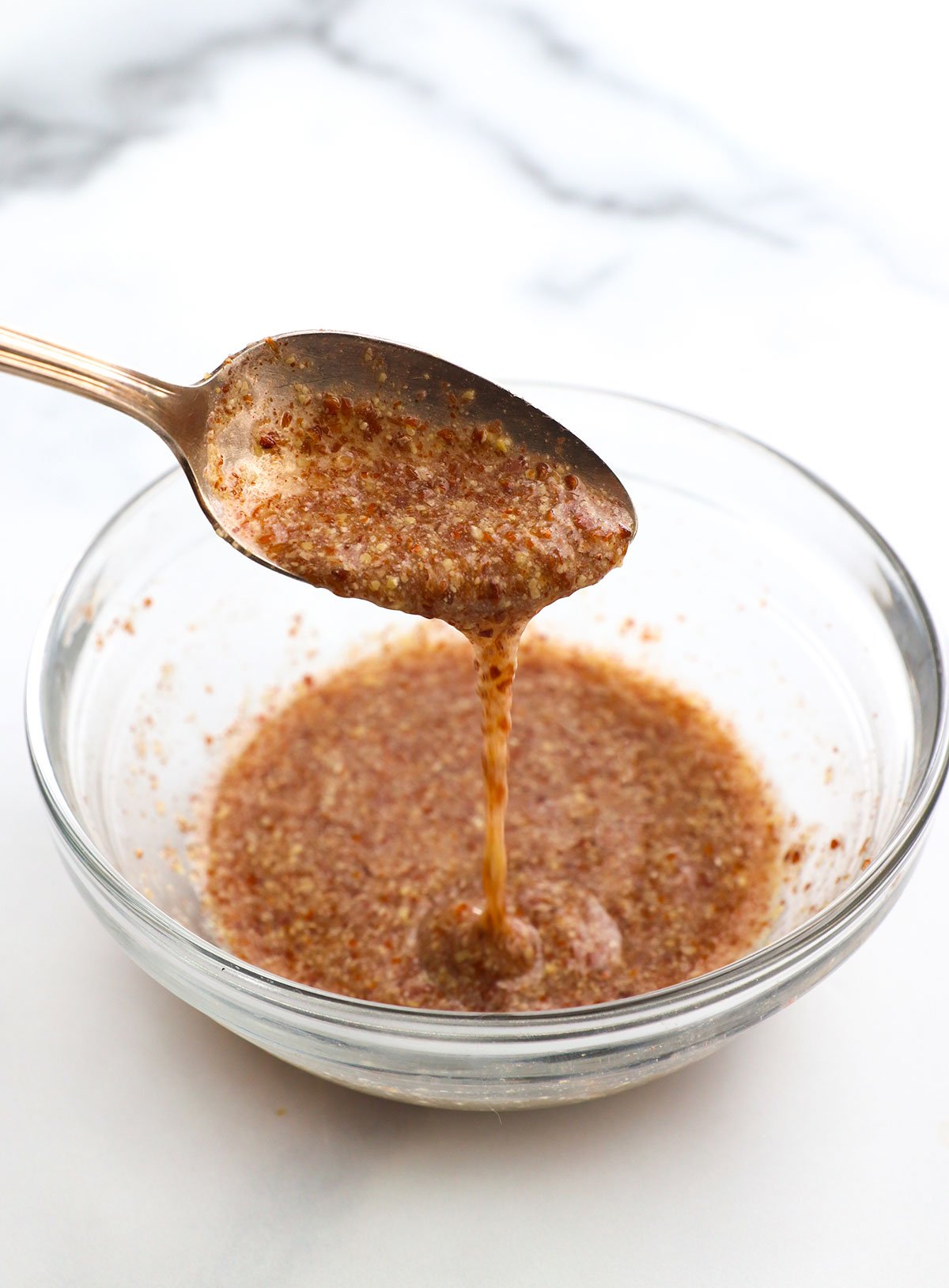
Flax Egg Ingredients
All you need is:
- Flax seeds. Your flax seeds must be ground, so if you buy whole flax seeds from the store, you’ll need to use a coffee grinder to break them down finely. Luckily, it’s easy to buy ground flaxseed at the store now, too.
- Water. Adding liquid to the ground flax will help it gel and turn into a gooey egg substitute in minutes. In my experience, using hot water will make the flax egg gel faster than cool water, but either option will work.

How to Make a Flax Egg
Step 1:
If you start with whole flaxseed, you must grind it first. Add a few tablespoons of seeds to a coffee grinder, spice grinder, or high-speed blender, and pulse briefly until the seeds are finely ground.
(A food processor won’t work to grind the seeds because the bowl is too big.)
You can skip this step if you start with a bag of flaxseed meal or ground flaxseeds you bought at the store.

Step 2:
Add one tablespoon of ground flaxseed to a small bowl with three tablespoons of water. Mix well with a spoon or small whisk, then let the bowl rest for 5 minutes.
The mixture will thicken as it rests. This will make one egg replacement.
Once the mixture has thickened, it’s ready to use in your recipe. However, this egg substitute won’t work perfectly in all cases, so check out the tips below.
When to use less water
The most common flax egg ratio is 1:3, meaning one tablespoon of ground flax seed to 3 tablespoons of water. However, you can use less water for the flax egg when making something with a very runny batter, like quick bread.
When making banana bread or cake that calls for more than one regular egg, try using a 1:2 ratio (1 T ground flax + 2 T water) for the flax egg replacement.
If you want cookies to be less moist in the center, the 1:2 ratio works best in that case, too.
How to Use Flaxseed Egg Replacer
Chicken eggs not only act as a binder in recipes, but they also help with lift and structure. Flax eggs don’t do everything, so adjust your expectations when using them.
Use flax eggs in recipes like:
- Cookies. Cookies are relatively flat and usually require only one egg. Flax eggs will work well here!
- Brownies. If you love a brownie with a gooey center, then flax eggs will work here, too. They don’t provide as much rise and structure as eggs, but they usually hold a brownie recipe together. (If a recipe calls for two eggs, check out my other egg substitutes.)
- Recipes that call for all-purpose flour. Wheat flour and all-purpose flour contain gluten, which makes them both very forgiving in recipes. Flax eggs will usually work well in muffins and breads made with regular white flour.
Detoxinista Tip
It’s a good idea to swap your leavener when using flax eggs. If a recipe calls for a 1/2 teaspoon of baking soda, use double that amount of baking powder when using a flax egg. It will help add some of the lift that regular eggs provide.
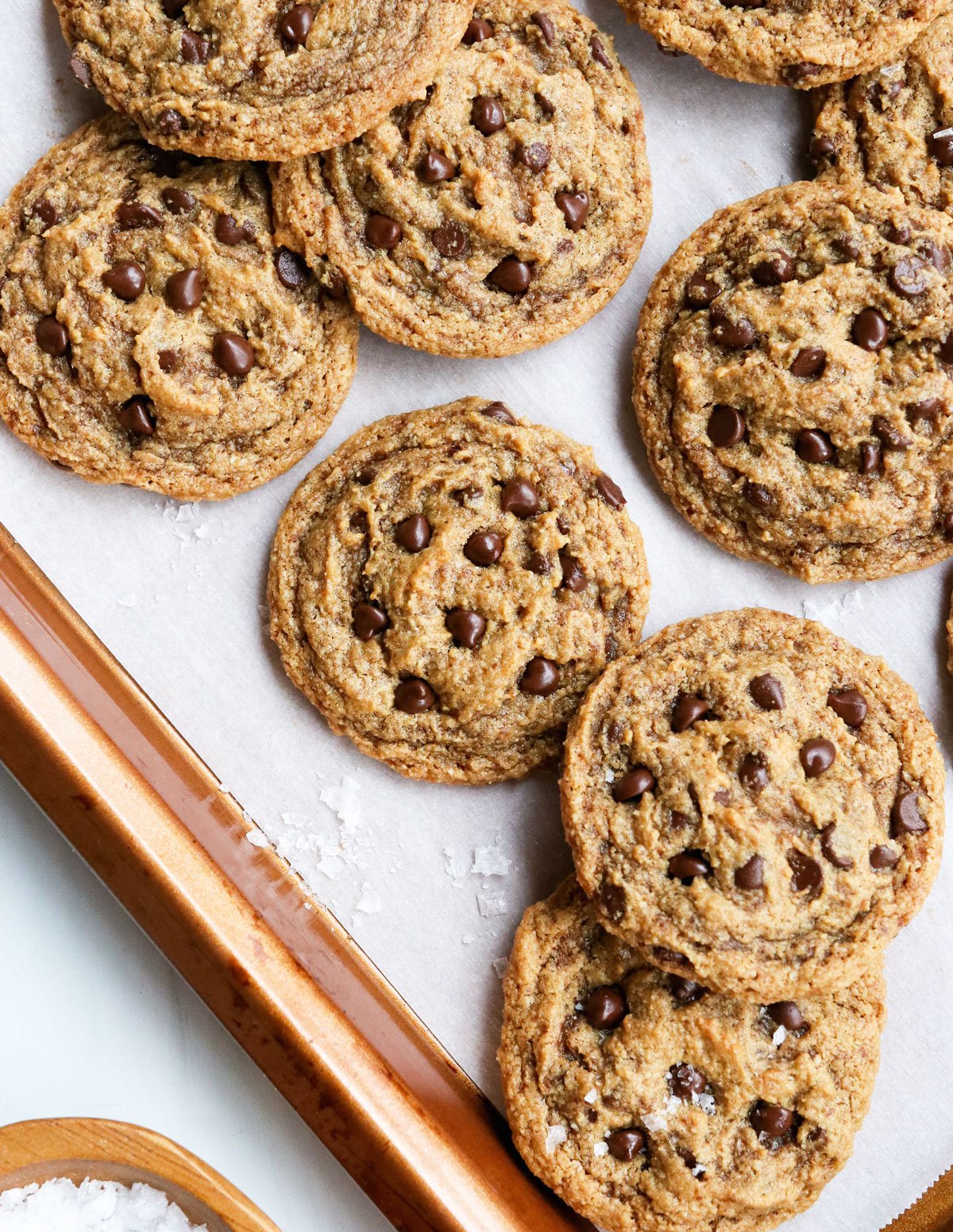
Don’t use flax eggs in:
- Recipes that call for more than 3 eggs. In general, the more eggs you need to substitute, the more issues you may run into. Using more than two flax eggs could result in baked goods that are gooey or have an underbaked texture.
- Paleo & gluten-free recipes. When using almond flour or coconut flour, flax eggs may not provide the required structure. (If you don’t mind a gooey cookie or brownie, they could still be helpful in that case, but experiment at your own risk.) Even grain-based flours, like oat flour and buckwheat flour, work better with real eggs, so the result could be more gummy or dense when leaving the eggs out.
- Flourless recipes. If a recipe doesn’t call for flour, it probably relies on the eggs for structure. Flax eggs won’t work very well in this case.
For tested egg-free recipes, start with a vegan recipe, which will naturally be egg-free anyway!
Recipes that Use Flax Eggs
If you want to start with a trusted recipe, these already use flax as the binder.
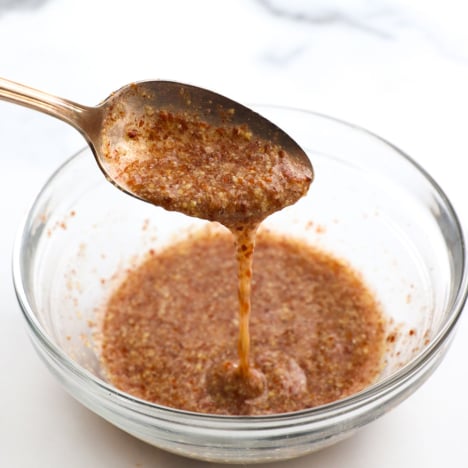
Ingredients
- 1 tablespoon ground flax seeds (or chia seeds)
- 3 tablespoons water
Instructions
- Add the ground flax seed and water to a bowl and stir well. Let the mixture rest for at least 5 minutes. Note: If using this in a quick bread recipe, use only 2 tablespoons of water instead of 3. Breads and cakes don't need the extra moisture.
- When the flax egg looks thicker, you can use it as an egg replacement in baking recipes. (See tips in this post for which recipes work best with a flax egg.)
Notes
- Nutrition information is for 1 flax egg. This information is automatically calculated, and is just an estimate, not a guarantee.
- You can use ground chia seeds instead of flax seeds, to make a chia egg.
- Flax eggs work best in recipes that call for all-purpose or whole wheat flour and don’t call for more than 2 eggs. Try them in cookies or brownies where you don’t mind a slightly softer, gooey center.
- Do NOT use flax eggs as an egg replacement in recipes that call for almond flour or coconut flour. Flax eggs won’t provide the structure that chicken eggs do, so they also aren’t a great fit for flourless recipes.
- See the full post above for more tips on using flax eggs.
Nutrition
If you try this flax egg recipe, please leave a comment and star rating below letting me know how they worked out for you!


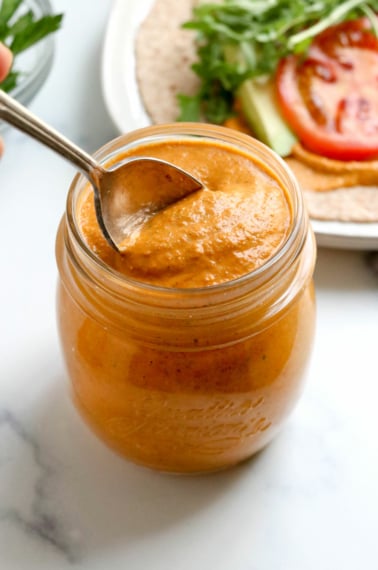
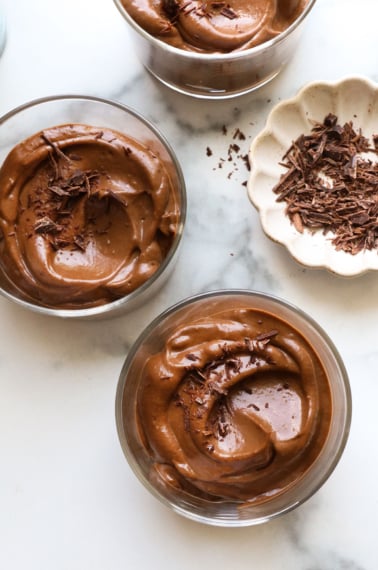

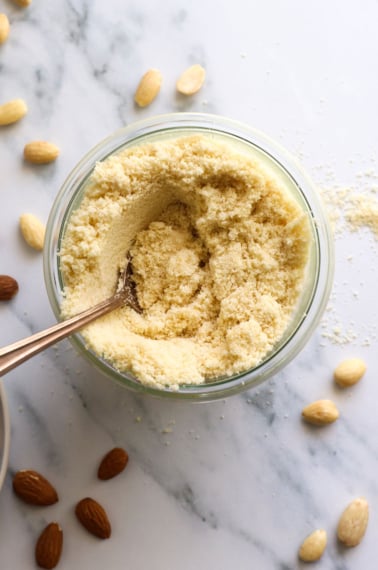






This recipe and site is very helpful. Much appreciated. Stay Blessed as always!